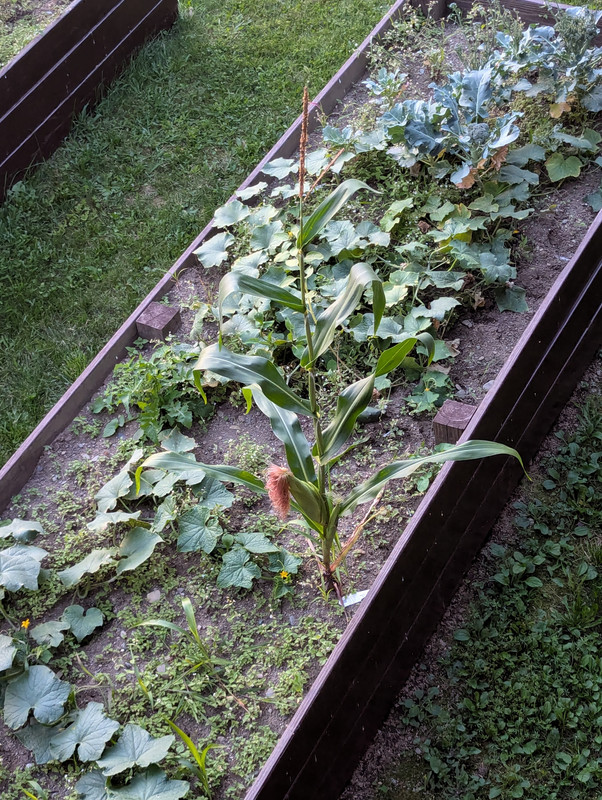Rural/Farm Life
Related: About this forumSo I posted this thread about growing an ear of corn, earlier this summer .....
https://www.democraticunderground.com/11822218But, turns out, a single cornstalk can grow an ear.....who knew?

marble falls
(70,480 posts)OAITW r.2.0
(31,337 posts)Love the prep, but, it turns out, too much else goes on around here, to pay attention to the garden. ![]()
dweller
(27,776 posts)You know how many silk there are ?
🤔
✌🏻
OAITW r.2.0
(31,337 posts)dweller
(27,776 posts)for every kernel … ain’t Nature grand ?
✌🏻
OAITW r.2.0
(31,337 posts)Thanks!
ret5hd
(22,128 posts)the way i understand things.
Frasier Balzov
(4,829 posts)I pull those all the time.
OAITW r.2.0
(31,337 posts)central scrutinizer
(12,648 posts)Seed companies would contract with a farmer to produce hybrid corn seeds for the following year’s planting. There’d be four female rows, then one male row, four female, one male, etc. We’d go down the female rows, pulling out the tops before they became mature enough to produce pollen. The male plants had some characteristics that they wanted to introduce to the gene pool. $0.95/hour
OAITW r.2.0
(31,337 posts)This isn't your Mayan's idea of corn.....
central scrutinizer
(12,648 posts)The new GMO seeds have terminator genes that prevent you from saving seeds from this year’s crop to plant next year. They won’t sprout, forcing you to buy more. I’ve read that these terminator seeds are disrupting the corn culture in Mexico because the pollen can travel on the wind a long ways and infect other fields. Different strains of corn are important in ceremonies and they may be in danger of being exterminated.
OAITW r.2.0
(31,337 posts)Thanks.
Farmer-Rick
(12,408 posts)GMO corn made up an estimated 94% of the corn planted in the US, occupying more than 86 million acres. In fact, GMO varieties are so ubiquitous in the US that corn is considered a high-risk crop under the Non-GMO Project Standard
If you want organic corn for your animals, you have to buy it from Europe. The US has pretty well contaminated all their corn with GMOs.
The problem with GMO pollen drift and contamination of non GMO corn.
Financial risk — A farmer whose organic or non-GMO crops are contaminated can lose market access, causing economic hardship. Organic farms are tested and GMO plants will disqualify a farmer from an organic market.
Legal risk — Most GMO seed is patented, and the farmer whose crop was compromised is potentially liable for contamination events. GMO corporations have been known to file suite against farmers with contaminated corn.
Loss of biodiversity — Contamination from GMO seeds or pollen can change the characteristics of a non-GMO crop, impacting a crop's suitability for food, industrial or breeding purposes.
3catwoman3
(28,484 posts)I'm a methodical corn-on-the-cob eater. I like to eat 2 rows at a time to savor it longer, but have to start with 3 rows because it easier to get my teeth around 3 rows for the first "trip" along the cob. Then, 2 rows at a time until the cob is almost bare. There are always 3 rows left.
I find this intriguing, because it means there are an even number of rows of kernels on the cob - such symmetry in nature.
OAITW r.2.0
(31,337 posts)Yours is the most logical. ![]()